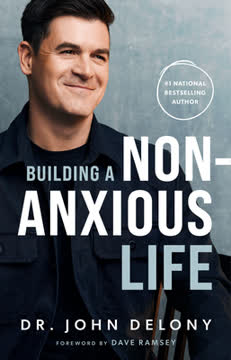つの重要なポイント
1. お金との関係があなたの財政的未来を形作る
お金はただの道具です。ランニングシューズも道具です。ドライバーも道具です。体温計も道具です。誰も「ランニングシューズはすべての悪の根源だ」とは言いません。
マインドセットが重要です。 子供の頃に形成されたお金に対する信念は、財政的な意思決定に大きな影響を与えます。これらの信念を認識し、再構築することが財政的成功に不可欠です。お金との健全な関係を育むために以下を実践しましょう:
- 財政的資源に感謝の気持ちを持つ
- 明確な財政目標と意図を設定する
- お金と富に対する成長マインドセットを育てる
- お金に関する感情的な負担や制限的な信念に対処する
お金を感情的な引き金ではなく中立的な道具として見ることで、より合理的な財政的決定を下し、目標に向かって効果的に進むことができます。
2. 予算管理と純資産の追跡は重要な財政ツール
作業予算は、借金から抜け出す旅路で冷静さと集中力を保つための最良のツールです。
財務をマスターする。 収入、支出、純資産を定期的に追跡することで、財政の健康状態と進捗状況を明確に把握できます。以下の実践を取り入れましょう:
- ゼロベース予算を作成し、すべてのドルを特定の目的に割り当てる
- 毎月純資産ステートメントを更新し、全体的な財政進捗を監視する
- 「絞り込み法」を使用して、借金返済や貯蓄のための余分なお金を見つける
- 予算管理と追跡プロセスを自動化し、一貫性を確保する
財政状況を詳細に理解することで、情報に基づいた決定を下し、財政的自由への旅路でモチベーションを維持できます。
3. 借金返済には戦略的で集中したアプローチが必要
朝のコーヒーを飲みながらデバイスにログインし、前日のアカウントと予算を素早く確認し、どのような損害(もしあれば)を確認しましょう。
借金を体系的に取り組む。 効率的に借金を消滅させるための集中した戦略を開発しましょう:
- すべての借金をリストアップし、返済方法を選択する(例:最高金利、最小残高、感情的影響)
- すべての借金に最低支払いを行いながら、余分な資金を一つの借金に集中させる
- 「スノーボール」または「アバランチ」法を使用して借金返済を加速する
- 借金完了の節目を祝うセレモニーを行い、モチベーションを維持する
進捗を一貫して追跡し、必要に応じて戦略を調整することで、勢いを維持し、より早く借金から解放されることができます。
4. 収益を生む資産を特定し、育成する
資産は私たちのポケットにお金を入れ続けるものです。負債は私たちのポケットからお金を取り出すものです。
富を生む資産を構築する。 負債を取得するのではなく、受動的収入を生む資産を育成することに焦点を当てましょう:
- 現在の所有物や投資を評価し、真の資産を特定する
- 収益を生む不動産、配当を支払う株式、またはビジネスに投資する
- 継続的な収入を生むスキルや知的財産を開発する
- 富を築く戦略や機会について継続的に学ぶ
ポケットにお金を入れる資産を優先することで、財政的自由への旅を加速し、長期的な財政安定を築くことができます。
5. 保険と遺産計画で財政的遺産を守る
適切な個人保険を持つことで、職場での怪我があってもカバーされます。がんになってもカバーされます。酔っ払って裸でスカイダイビングしても—もし生きていれば—カバーされるかもしれません。
未来を守る。 適切な保険カバーと遺産計画を実施して、財政的進捗と愛する人々を守りましょう:
- 生命保険、障害保険、重大疾病保険のニーズを評価する
- 遺言を作成し、受益者の指定を定期的に更新する
- 価値観や希望を伝えるためのレガシーレターを準備する
- 緊急時に簡単にアクセスできるように重要な書類や情報を整理する
これらの財政計画の側面に対処することで、あなたの苦労して得た富が保護され、将来の世代のために遺産が保存されることを確保できます。
6. 賢く投資して長期的な富を築く
知識はリスクを減らすものです。
自分を教育する。 様々な投資オプションや戦略についての確固たる理解を深め、情報に基づいた決定を下しましょう:
- 株式、債券、ミューチュアルファンド、ETFなどの異なる投資手段を調査する
- 分散投資とリスク管理の重要性を理解する
- 異なる投資口座の税金の影響を考慮する(例:税金のない成長対税金の繰延)
- 複利の力を活用するために早期かつ一貫して投資を始める
投資知識を継続的に拡大し、健全な戦略を実施することで、長期的な財政目標を支える堅実なポートフォリオを構築できます。
7. 受動的収入が支出を超えると財政的自由が得られる
受動的収入が支出を超えるとき、あなたは財政的に自由になります。
収入源を作る。 真の財政的自由を達成するために、複数の受動的収入源を構築することに焦点を当てましょう:
- 月々の支出を決定し、「財政的自由の数」を計算する
- 受動的収入源の可能性を特定する(例:賃貸不動産、配当投資、オンラインビジネス)
- 受動的収入を体系的に増やしながら支出を管理する
- 受動的収入を再投資して富の構築を加速する
受動的収入が支出を上回るポイントに向けて一貫して努力することで、財政的独立を達成し、財政的制約なしに情熱を追求する自由を得ることができます。
最終更新日:
FAQ
What's Get the Hell Out of Debt about?
- Debt Recovery Focus: The book outlines a three-phase method to help individuals eliminate consumer debt and shift their relationship with money.
- Personal Stories and Humor: Erin Skye Kelly uses personal anecdotes and humor to make financial advice relatable and engaging.
- Empowerment Through Action: It emphasizes actionable steps to regain control over finances, encouraging mastery over money.
Why should I read Get the Hell Out of Debt?
- Practical Solutions: Offers step-by-step instructions for managing and eliminating debt, making it accessible for anyone struggling financially.
- Emotional Insight: Delves into the emotional aspects of debt, helping readers understand how feelings about money impact financial decisions.
- Community Support: Encourages joining a supportive community through the author’s online program, aiding thousands in achieving financial freedom.
What are the key takeaways of Get the Hell Out of Debt?
- Three Phases of Debt Elimination: Structured around planning and preparation, paying off consumer debt, and building wealth post-debt.
- Net Worth Tracking: Teaches readers to calculate and regularly update their net worth for better financial understanding.
- Budgeting Techniques: Emphasizes creating a working budget and offers methods to manage expenses effectively.
What is the Quick and Dirty Fund in Get the Hell Out of Debt?
- Emergency Savings: Designed to be the equivalent of one paycheck, serving as a safety net for unexpected expenses.
- Funding Method: Encourages generating this fund quickly by selling unused items and decluttering.
- Purpose: Prevents falling back into debt during emergencies, not for regular expenses.
How does Erin Skye Kelly suggest I calculate my net worth?
- Assets vs. Liabilities: Subtract total liabilities from total assets to calculate net worth.
- Regular Updates: Recommended to update net worth monthly to track progress and maintain financial awareness.
- Emotional Connection: Understanding net worth helps build a stronger relationship with money.
What are the phases outlined in Get the Hell Out of Debt?
- Phase One: Focuses on planning and preparation, organizing finances, and understanding the financial situation.
- Phase Two: Dedicated to actively paying off consumer debt using strategies like the Smallest Balance Method or Highest Interest Rate Method.
- Phase Three: Encourages building wealth and investing post-debt to avoid falling back into debt.
What is the Emotional Mastery Method in Get the Hell Out of Debt?
- Focus on Feelings: Prioritizes debts based on emotional responses for a personalized approach to repayment.
- Motivation Through Emotion: Harnesses emotions as motivation to pay off debts that evoke the strongest feelings first.
- Personal Empowerment: Emphasizes understanding and mastering emotions for long-term financial success.
What budgeting techniques does Erin Skye Kelly recommend in Get the Hell Out of Debt?
- Zero-Based Budgeting: Allocates every dollar of income to specific expenses, ensuring no money is left unassigned.
- Daily Check-Ins: Suggests checking the budget daily to stay aware of spending and make necessary adjustments.
- Squeeze Method: Encourages finding extra money in the budget to apply directly to debt.
What are some common mistakes people make with debt, according to Get the Hell Out of Debt?
- Consolidation Missteps: Believing debt consolidation solves problems without addressing underlying financial habits.
- Ignoring Emotions: Failing to recognize emotional aspects of debt can lead to poor financial decisions.
- Lack of Budgeting: Not having a working budget often results in overspending and further debt accumulation.
What is the Debt Annihilation List in Get the Hell Out of Debt?
- Prioritization Tool: Organizes debts to make repayment manageable and motivating, based on smallest balance or highest interest rate.
- Commitment to Action: Writing out the list solidifies commitment to paying off debts and serves as a visual reminder.
- Focus on One Debt: Advises focusing on one debt at a time while making minimum payments on others.
How does Get the Hell Out of Debt define financial freedom?
- Passive Income Exceeds Expenses: Achieved when passive income surpasses monthly expenses, sustaining lifestyle without active income.
- Budgeting and Planning: Requires diligent budgeting and planning to understand expenses and income sources.
- Long-Term Vision: Emphasizes having a long-term vision for financial health, including investing and building wealth post-debt.
What are the best quotes from Get the Hell Out of Debt and what do they mean?
- “Being broke is expensive.”: Highlights hidden costs of living in debt, like high-interest rates and fees.
- “Your past is not an indicator of your future.”: Emphasizes power to change financial trajectory through informed decisions.
- “Your available balance is not available money!”: Stresses that credit is debt and should be treated as such.
レビュー
『Get the Hell Out of Debt』は、個人の財務に関する親しみやすくユーモラスなアプローチで高く評価されている。読者は、エリン・スカイ・ケリーの率直なアドバイス、段階的なガイダンス、お金との関係を変えることに焦点を当てた内容を高く評価している。多くの人がこの本を人生を変えるものと感じ、借金に取り組み、金融リテラシーを向上させるのに役立ったと述べている。著者の個人的なエピソードや感情的な知性が読者に共感を呼んでいる。いくつかの概念は既知のものであるが、本書の魅力的なスタイルと実行可能なアドバイスが他と一線を画している。ただし、ADHDの人や異なる財務アプローチを好む人には必ずしも適していないという批判もある。
Similar Books














